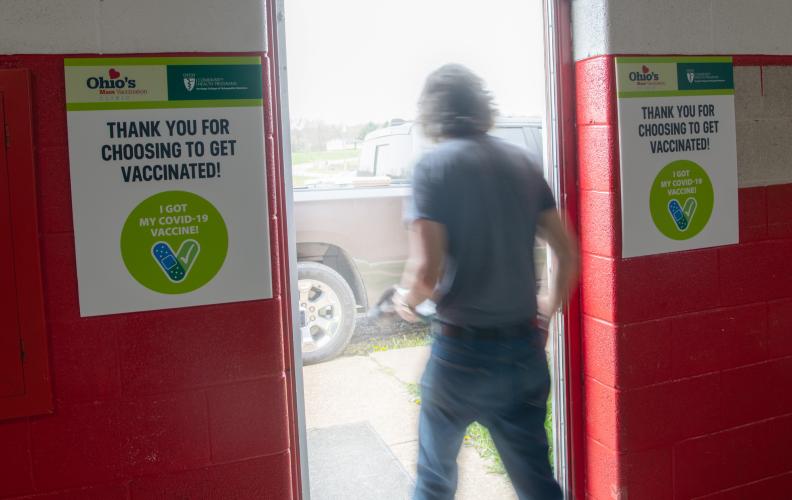
New OHIO research finds reasons for vaccine hesitancy among Ohioans

Distrust in government and institutions is a key indicator of COVID-19 vaccine hesitancy according to a recently published study by a team of Ohio University researchers.
The team, led by Zelalem Haile, Ph.D., associate professor of epidemiology at the Ohio University Heritage College of Osteopathic Medicine, Dublin, looked at this and other factors influencing Ohio residents’ willingness to be vaccinated. They found that 40.9% of participants were either unwilling or unsure about getting vaccinated. The number of participants who were willing to be vaccinated, 59.1%, was roughly comparable to the state’s current vaccination rate.
The study also found broad demographic characteristic showing vaccine hesitancy was higher among females, non-Hispanic Blacks, unmarried people, and those with a high school education or less.
“We wanted to identify some of the predictors influencing COVID-19 vaccine acceptance so that policy makers would have the information they need to develop the most effective public vaccination campaigns,” Haile said. “The biggest fact to the study is there is still big resistance to the vaccine. You’d expect by now, after a year, our numbers would be much higher.”
Currently, only 57.25% of Ohio residents are fully vaccinated against COVID-19 — well below the national vaccination rate of 65% — making Ohio 35th in the nation for vaccinations. Vaccination rates particularly lag in rural Ohio.
Haile and the research team, consisting of Anirudh Ruhil, Ph.D., professor of leadership in the Voinovich School of Leadership and Public Service; Benjamin Bates, Ph.D., professor of health communications at Scripps College of Communication; Orman Hall, research lead for the OHIO Alliance for Population Health in the College of Health Sciences and Professions; and Mario Grijalva, Ph.D., director of the Infectious and Tropical Disease Institute and professor of microbiology at the Heritage College, began collecting data in January 2021, before data about vaccine hesitancy was widely available or understood. Using an online platform, the researchers recruited adults living in Ohio to participate in the cross-sectional study to find out what portions of the population would be hesitant to receive the vaccine and why.
While a central finding of the study asserts that vaccine acceptance varies by sociodemographic characteristics, another common theme found among each of the sampled demographics involved trust in government and institutions – what Haile called “modifiable factors.” This key indicator played a significant role in whether a person was likely to get vaccinated. Those who either were unwilling or unsure about getting vaccinated frequently cited safety and efficacy of the vaccines themselves. However, the research team found that these inhibiting factors could be modified by simply taking measures to improve confidence and trust in those institutions.
“There is a need for science and politics to find ways to be transparent to get public trust,” Haile said.
The research indicates erosion of trust in political leaders and institutions directly coincides with vaccine hesitancy. For example, this is reflected in vaccine hesitancy among Ohio’s Black population, where vaccination rates are at 43.4%. This is in part due to a history of systemic and medical racism, according to Haile.
This factors into why a blanket “let’s get vaccinated” campaign won’t work, Haile said. Instead, the study’s authors recommend that state and local governments pursue solutions unique to each community, such as having a candid discussion about race and systemic racism.
“It’s important to identify individuals who are trusted in those communities to educate the public on vaccinations,” Haile said.
Since a one-size-fits-all approach isn’t a viable solution, Haile hopes that this research, which was published in February by BMC Public Health, a peer-reviewed epidemiology and public health journal, can help local public health authorities develop effective, culturally appropriate and context-specific communication strategies to improve vaccination rates.
This remains a huge concern for Appalachian Ohio, Haile said, because the region not only has among the lowest vaccination rates in the state, but it also has the highest rate of underlying health conditions that could dramatically exacerbate the already-deadly effects of COVID-19.
“Unless we do something to address this issue, the consequences will be greater for this region,” Haile said.
